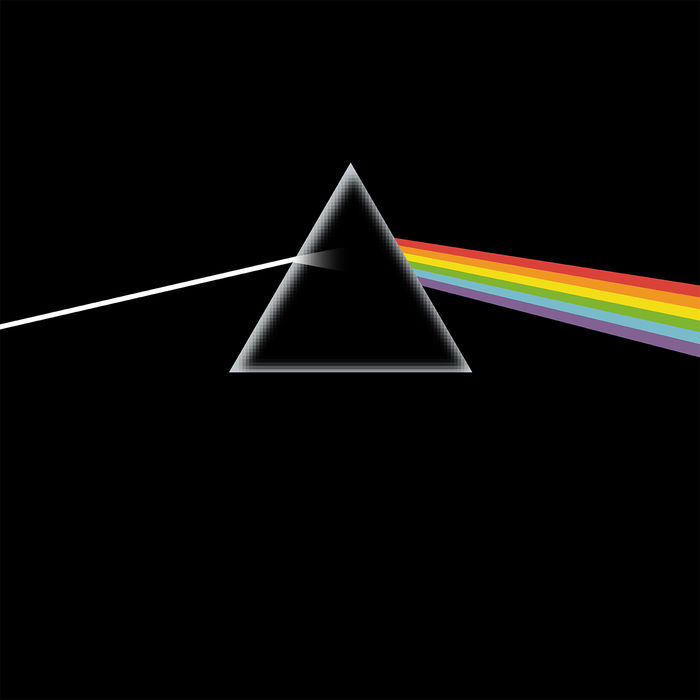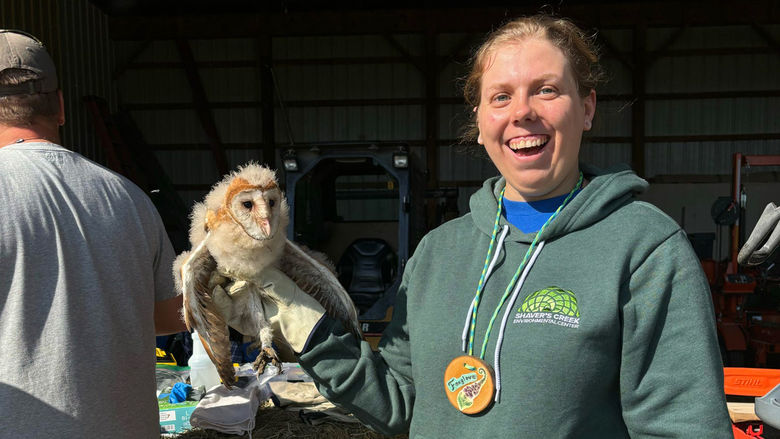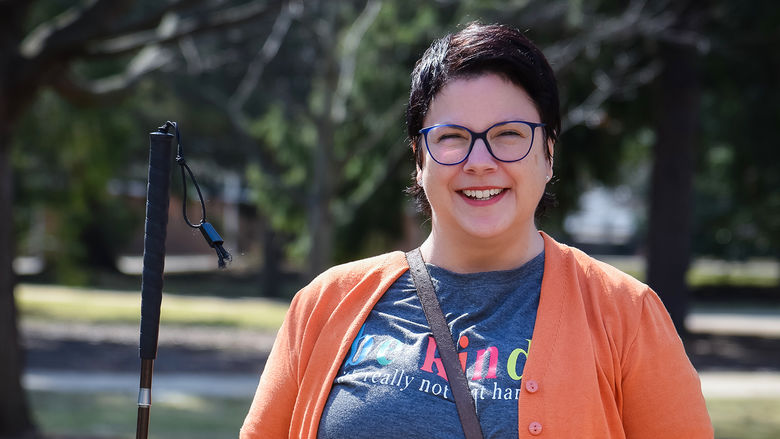

This dialog contains the full navigation menu for this site.


Cover Art for Pink Floyd's Dark Side of the Moon.
Harold Hayford was playing keyboards in local Altoona bands and going to high school when Pink Floyd’s landmark album Dark Side of the Moon was released in 1973. Fifty years later, Hayford is an associate teaching professor of mathematics at Penn State Altoona, and Dark Side of the Moon is the third-best-selling studio album of all time. Hayford decided the anniversary was a good time to commemorate the album with a live performance.
When the album was originally released, Lloyd Grossman in Rolling Stone described Dark Side of the Moon as “a single extended piece rather than a collection of songs ... a fine album with a textural and conceptual richness that not only invites but demands involvement. There is a certain grandeur here that exceeds mere musical melodramatics and is rarely attempted in rock.” To this day, it’s called “amazing,” “timeless,” and “one of the best rock albums of all time.”
Performing an album this respected requires skilled artists. Between Hayford’s connections in the local music scene and his colleagues on campus, he had a wealth of options for choosing collaborators. “This is a labor of love,” he says. He didn’t have to go far to put together a band: “Some of the guys who make up the core band I’ve been playing with for fifty years. I told them, ‘This was such an important album at the time; I would really love to have you do this.’ Rick Wertz is on guitar—we’ve been best friends since high school. His son Eric will be playing drums and percussion.” Other musicians include Eli Byrne, saxophone soloist; Ben Eberhart, guitar; Randall Rutherford, bass guitar; and Steve Oswalt on vocals.
To add dancers and backup singers to the performance Hayford reached out to KT Huckabee, Teaching Professor, Integrative Arts and Dance, and Coordinator, Integrative Arts Program, and she in turn brought in Bonnie Cutsforth-Huber, Professor of Music.
Enthusiasm for the project is palpable among the professors. “This is truly a tribute,” Huckabee says. “It’s such an iconic album.” And one that has endured: “most of our students know the music. It’s not foreign to them.” What history the students didn’t know, the instructors are more than happy to share, telling them, “you go to concerts now and that’s because of what they did 50 years ago. Subsequent artists continue to push the bar.”
Despite Dark Side of the Moon coming out “the year I was born,” Cutsforth-Huber says, “I knew about it because, being a classical singer, what interested me is that a lot of the concepts involved are very operatic in nature. The whole concept of continuous music, moving in and out of different themes, emotional vignettes, using those as a total art concept. That’s what got me hooked as a teenager.”
The difference extended beyond the sounds on the album; even the audience experience was unique, she says. “Then and now concerts are quite loud. But when you look at the concert when Dark Side went on tour, often people were sitting quietly and listening, absorbing the music. That’s something you don’t often see at a rock concert. Roger Waters called it ‘electric theater.’ They used surround sound, 360 lighting, they went on tour with a ballet company. They were using movement as a way to express feelings. It was very odd to watch that footage—it looked like a classical music concert.
“My part in this is working with the student singers, all of whom had auditioned and had ever sung together before. They are singing all of the background harmonies for the band and also harmonizing with the band lead singer,” Cutsforth-Huber continues. “What I have been trying to teach them is when you are harmonizing and singing backup for this type of thing, even when you’re not singing text or singing lines, your job is to communicate emotions. A lot of the times when you’re a backup singer, you’re given vowels or nonsense words. Your job as a singer is to use that as a vehicle to communicate emotion and ambiance.”
She’s pleased with the results: “The singers have risen to that challenge. It’s very much a team effort, every much not ‘him and us.’ It’s really changed their way of looking at what backup singers do. It’s a real art and a real story. We’ve done a lot of talking about what each song means and what it is they’re trying to communicate in the context of that song. One of the singers said to me, “This is so much deeper than I thought.”
While Hayford and Cutsforth-Huber concentrate on the aural, Huckabee’s focus has been the visual. She added movement to the performance by “incorporating dancers everywhere—13 or 14.” To choreograph this complex piece of work, she chose to “reflect on the statements made by Pink Floyd band members and the themes developed in the music and lyrics: isolation in the songs ‘Speak to Me’ and ‘Eclipse’; depression and sadness in ‘Brain Damage’ and ‘The Great Gig in the Sky’; disconnect from others (humanity) in ‘Us and Them’; consumerism, which I took a bit further into idolatry, in ‘Money’; and control, or lack of control in ‘Breathe,’ ‘On the Run,’ and ‘Time.’ Beyond this, I allowed the overall meaning of the lyrics to influence the direction the dances went in.”
Dancers of course need lighting and costumes. Huckabee adds, “I’m really excited to see what William Kenyon, head of the Lighting Design program at University Park, is going to do with the lighting. And at Altoona this semester we have an emerging artist, Kyle Artone, who is a theater designer. He is working on costumes. It’s going to be color all over the place.”
Artone’s inspirations came from “what Pink Floyd was doing in the ’70s, a through-line, one song moving into another,” he says. “Beyonce is doing the same thing.” He noticed their stage presence: “The way they were was very mysterious. They didn’t want to be seen. Fifty years later, that’s no longer the case. I looked at Beyonce, and the fashion designers she used, and Elton John, and it’s all about expressing yourself.”
The prism and solid black background of the album cover for Dark Side of the Moon was instantly iconic and gave Artone more inspiration. “These people are energy and performing in outer space. It’s about being strong and confident and unafraid to express whatever you’re dealing with.” From there, “I started going into what the dancers could look like. They have to have total mobility. But that doesn’t mean they can’t sparkle.” The performers’ makeup was designed by Penn State Altoona student Audrey Wawrynovic. Artone feels “very fortunate to be working with Audrey. Their makeup designs are crucial to completing the look.” Overall, he says, working on this project “is really exciting and a little bit scary because I’m doing something completely new. It’s kind of a fantastic journey to be on.”
Performances of Dark Side of the Moon will be held at 7:30 p.m. Oct. 18-20 in the Wolf Kuhn Theatre of the Misciagna Family Center for Performing Arts. This performance is free and open to the public through the support of the Kjell Meling Arts for All Initiative. For further information, call 814-949-5452.


